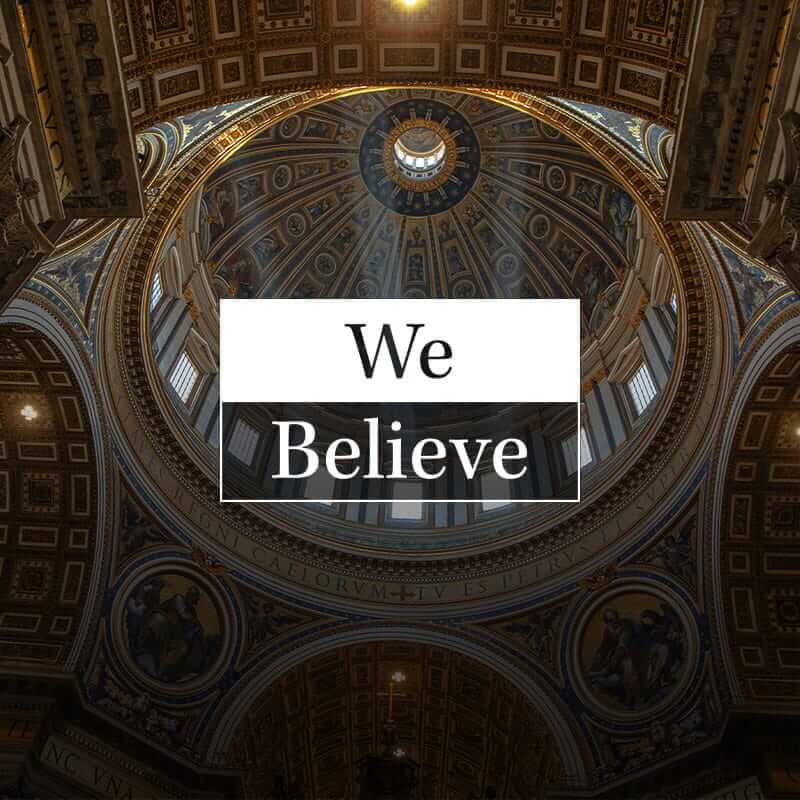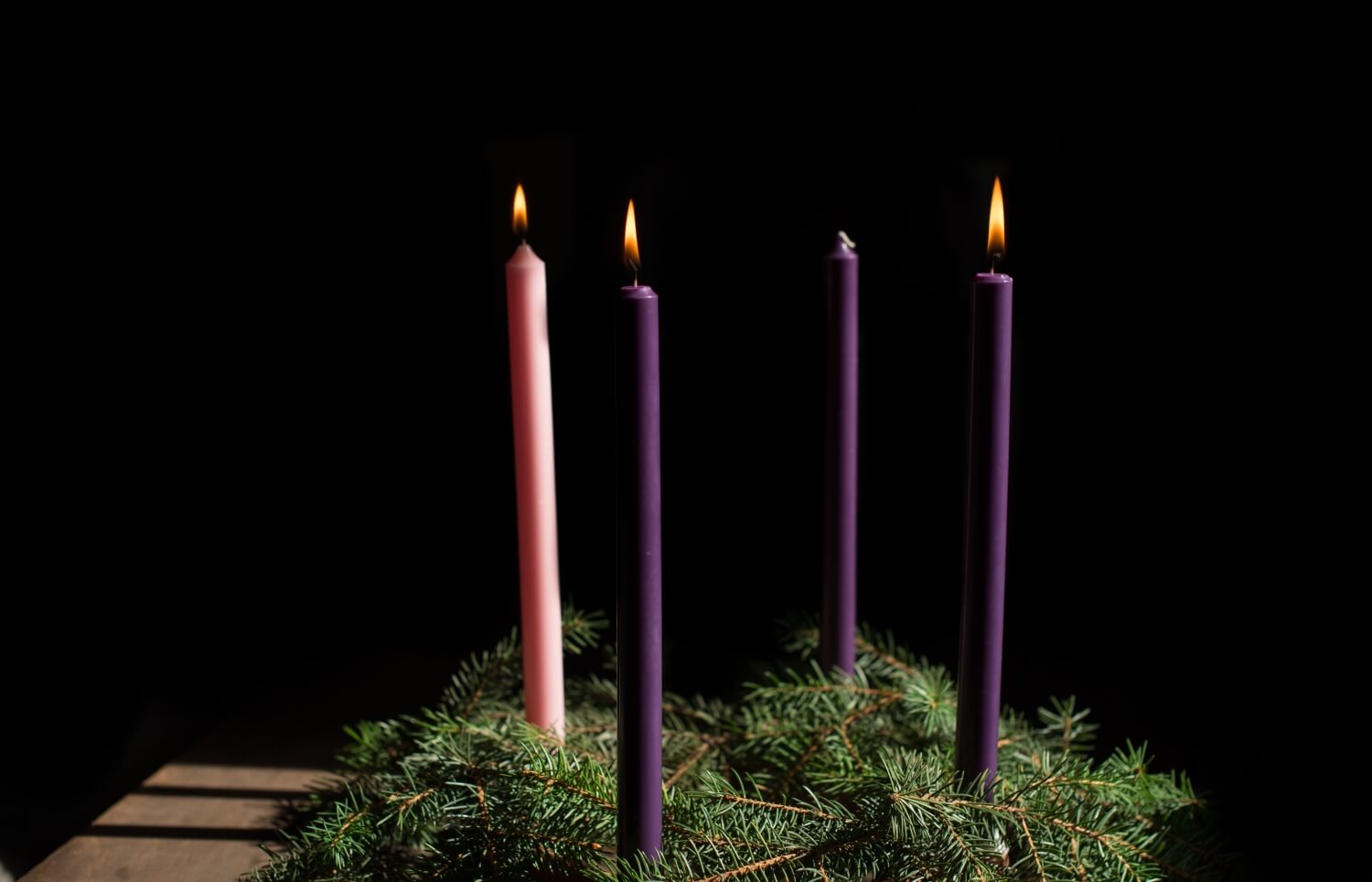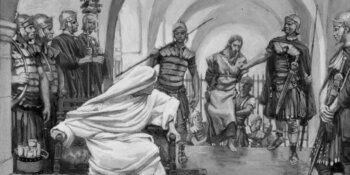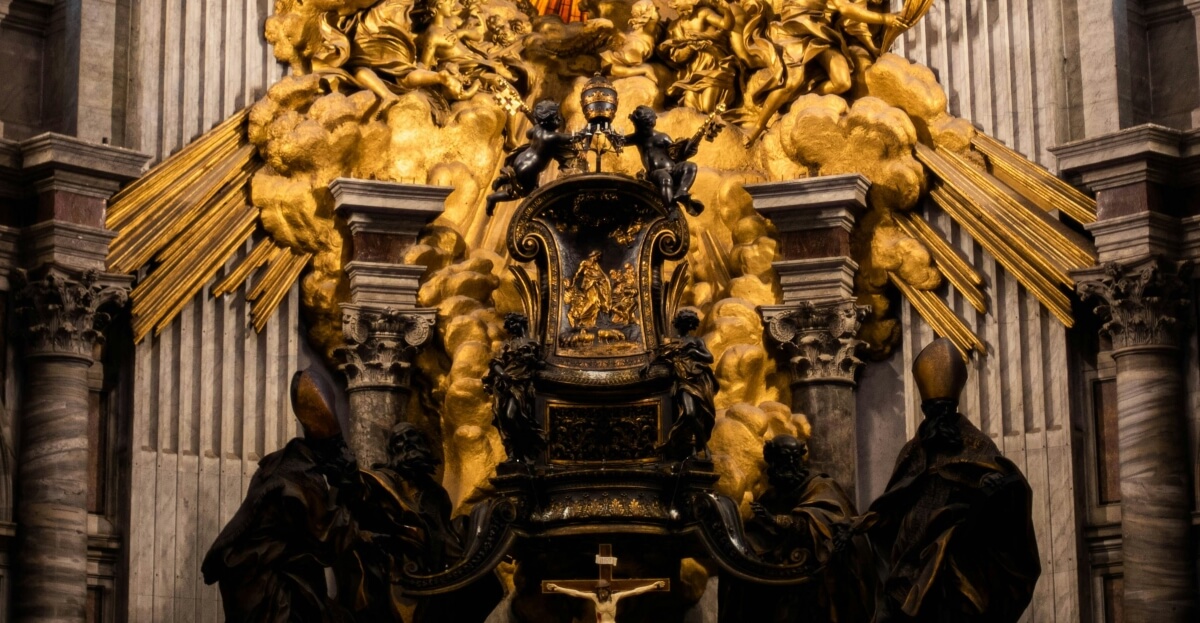
Yes, and it’s a very important chair!
Of all the feasts in the Roman liturgical calendar, today’s Feast of the Chair of St. Peter stands as one of the strangest at first glance.
We’re most used to feasts that celebrate saints or groups of saints (such as the North American Martyrs or the Seven Servite Founders).
Sometimes we celebrate an event (the Transfiguration, the Assumption, Dedication of the Basilica of St. Mary Major, or the Finding of the Cross) or a devotion (Corpus Christi or the Feast of the Immaculate Heart)…but since when has an inanimate object that does not relate to Our Lord or Our Lady, let alone a chair, become the subject of a feast?
And not only does this feast exist—it’s an important one. It’s so important that, perhaps surprisingly to us Westerners, it exists in the Eastern Catholic liturgical calendar as well, notably the Byzantine Rite (January 18th), the Alexandrian Rite (January 25th), and the Armenian Rite (January 19th).
This does seem to be one of the most curious feasts of the year, which means that Holy Mother Church is asking us to do more than simply stay at the surface level.
Fulfillment of the Old Testament
The first way to understand this great feast is to view it in the way that early Christians would have, namely, as the fulfillment of an Old Testament tradition. And a parallel jumps out immediately: the chair of Moses.
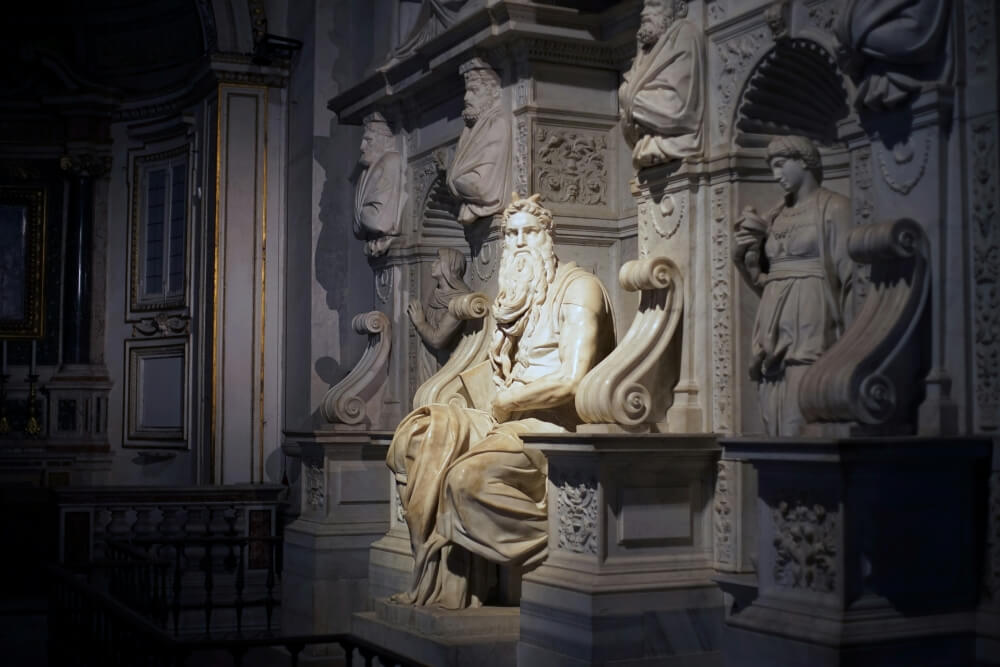
Moses is the dominant figure in 4 of the first 5 books of the Bible (excluding only Genesis). He is the one whom God calls to lead His people, to receive His Law, to interpret and judge the Law as God’s representative, and to delegate that authority to others to be lawful judges.
And not only is Moses the central figure in the early Bible, but the rest of the Old Testament constantly refers back to Moses and the Law that he gave to God’s Chosen People. In fact, Moses is so intertwined with the Law that, despite God being the Author of it and Moses only acting as its voice and interpreter, the Law is referred to as “the law of Moses,” with dozens upon dozens of Bible verses referring to it as such.
In a very real sense, Moses is the greatest figure of the Old Testament, and the one whose successor the Chosen People were awaiting. He prophesied in Deuteronomy 18:15:
A prophet shall the Lord your God raise up unto you of your brethren, like unto me: him you shall hear according to all things whatsoever he shall speak to you…
St. Peter later preaches in Acts 3:22 that it was Jesus Christ Who fulfilled this prophecy.
What Does a Chair Represent?
Before moving to the Chair of St. Peter, we should understand the meaning of a “chair” in the Old Testament.
In the Bible, when an authority is set to judge, he seats himself in a chair to promulgate authority and to act as judge. We first see this with Moses who “sat, to judge the people, who stood by Moses from morning until night” (Exodus 18:13). King Solomon built a “judgment seat” in his palace “where he sat in judgment” (3 Kings 7:7,8), and Pontius Pilate judges Christ from a seat in John 19:13. In many places in Scripture, it is written that God Himself will judge from a chair.
The “chair of Moses” refers to this power of judging. This is what Jesus speaks of when He says to His disciples in Matthew 23:
“The scribes and the Pharisees have sitten on the chair of Moses. All things therefore whatsoever they shall say to you, observe and do: but according to their works do ye not; for they say, and do not.”
Matthew 23:2-3
The passing of authority from Moses down through the ages is presented in the Jews’ oral tradition of teachings, the Talmud (which is not held as sacred by Christians, but which can give insight into some of the contextual history surrounding the Scriptures and rabbinic teachings that pre-date the New Testament). Here we learn:
Moses received the Torah at Sinai and transmitted it to Joshua, Joshua to the elders, and the elders to the prophets, and the prophets to the Men of the Great Assembly [leaders who arose around 500 BC].
Pirkei Avot 1:1
In the passage from Matthew cited above, Christ seems to indicate that the scribes and Pharisees have lawfully taken this authority of teaching, but do not exercise living out the Law in their lives.
But what does St. Peter have to do with this? Let’s find out by looking at the fascinating parallels between the two figures of Moses and Peter.
The New Moses
Moses was selected by God Himself, given the Old Law directly by the voice of God, and commanded to be the judge of it. The “chair of Moses” is symbolic of the lawful judgment given by God to a man to interpret the practical living out of the Law of the Old Covenant.
Similarly, Peter was selected by God Himself (Matthew 4:18). He was given the New Law directly by the voice of God when he listened to Christ preach and was sent to preach by Him. He was especially commanded to be the judge of the Law when Christ called him as the first pope in Matthew 16:18-19.
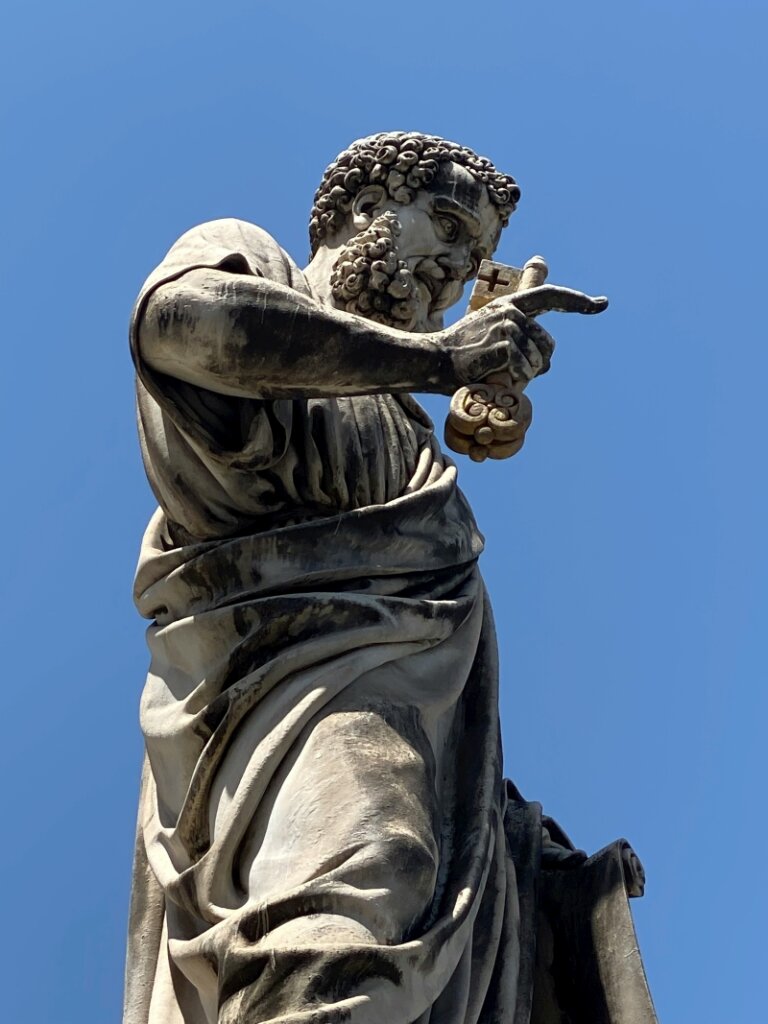
depicted holding a set of keys, the symbol of papal authority.
The “Chair of St. Peter” is therefore symbolic of the lawful judgment given by God to a man to interpret the practical living out of the Law of the New Covenant. We see immediate evidence of Peter’s authority in Acts 1 in the choosing of Matthias and Acts 10 in the dispensation from the Mosaic Law and the allowance for the preaching to the Gentiles.
Learning Through the Liturgies of the Feast
In the two forms of the Roman Rite, we celebrate St. Peter as the saint as well as the exemplar of the papacy, the one who received authority directly from God, and only connected to whom subsequent bishops of Rome have lawful authority.
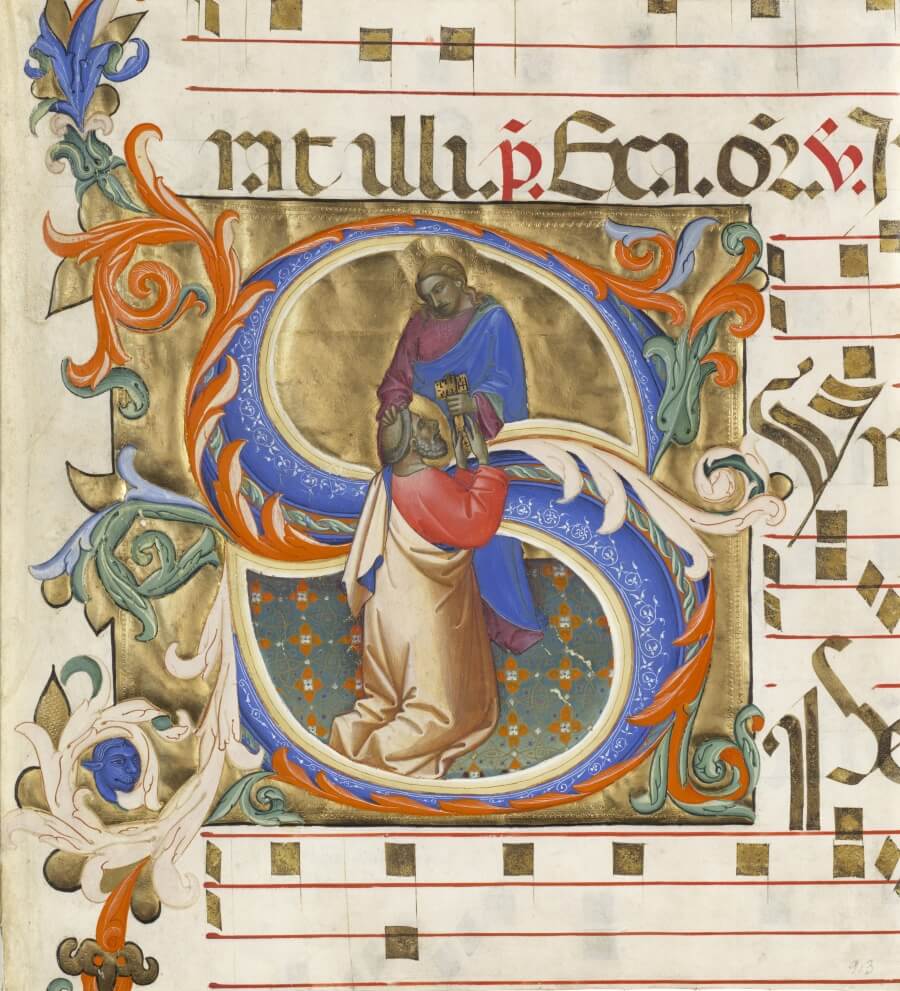
The Ordinary Form celebrates St. Peter as being the rock upon whom Christ chose to found our Faith. The priest prays in the opening prayer, the Collect, of the Mass:
“Grant, we pray, almighty God, that no tempests may disturb us, for you have set us fast on the rock of the Apostle Peter’s confession of faith.”
And to conclude the day’s liturgy, he prays:
“…with Saint Peter as her shepherd, she may come to an eternal inheritance, for it is through his teaching that she holds the faith in its integrity.”
The Extraordinary Form highlights the supernatural power that the Chair of St. Peter holds by asking for the greatest thing the Chair can grant: the power to forgive sins and thereby to grant true, supernatural peace.
This liturgy is beautiful in its consistent and persistent emphasis on the truth that we can be free from the shackles of sin, and that we have this hope through the continued, living, salvific work of Christ as passed down through St. Peter and his successors. While the entire liturgy is filled with direct or indirect allusions to it, the opening and closing prayers best exemplify the Church’s choice in thematically framing the day’s liturgy.
The opening prayer, the Collect, prays:
“O God, who committing to blessed Peter, Thine Apostle, the keys of the heavenly kingdom, didst bestow on him the pontifical function of binding and loosing, grant that, by the help of his intercession, we may be delivered from the bonds of our sins.”
The Mass of the day concludes in its final prayer:
“Let the gift we offer bring us joy, O Lord, that as we declare Thee wonderful in Thine Apostle Peter, so through him we may share the generosity of Thy forgiveness.”
Giving Thanks for the Gift of the Papacy
The USCCB tells us:
‘The Chair of St. Peter’ is an image of his seat of authority—an authority that was given not for his own personal gain but so that he could be a source of unity for the Church…Today, this feast reminds us of the significance of the ministry of St. Peter and the succession of popes who followed in his footsteps.
Today, on the feast of the Chair of St. Peter, let us give thanks. The message the Church is giving us today is that we are living in the age of the fulfillment of all prophecies, a fulfillment that the Chosen People of old long awaited. As Christ is the new Adam and Mary the new Eve, Peter is the new Moses, and the Chair of St. Peter is the new chair of Moses. We live in the age where the Chair of St. Peter gives merciful judgment, grants us forgiveness of our sins, and guides us in the way of truth.

